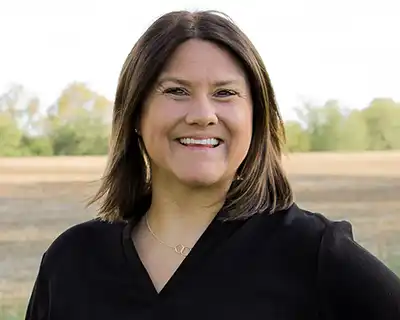Farm Bill programs and new funding mechanisms aim to meet the backlog of demand from farmers and ranchers.
Both sides of his family survived the Dust Bowl, the drought of the 1950s, two world wars and the early 21st Century drought, which U.S. Rep. Frank Lucas says was the most severe.
Through the years his family’s farms adapted to the economic chaos, divergent public policies and extreme weather that broke many farmers and decimated homesteaders on the arid plains. The ones that survived adopted new technologies and farming practices that allowed them to become more efficient and productive in the wake of dire weather and unpredictable economic conditions.
“I think my family, like most farm families, is a reflection of the nature of production agriculture, willing to adopt new technology, willing to pay attention to what was going on around them,” says Lucas, the longest serving member of the House Committee on Agriculture and generational farmer in Cheyenne, Okla., near the epicenter of the black blizzards that ushered in the soil conservation movement that would preserve American farmland for the next generations. “My relatives watched what happened under the old style, and they were perfectly enthusiastic about adopting technology. And that’s brought us to where we are now.”

There’s little doubt that conservation and technology are inextricably linked to agriculture today. Modern farmers spend more time in front of screens than they do with their hands on the wheel of a tractor, and soil maps for inputs and moisture have become hallmarks of profitability and efficiency as much as responsible management of the land and resources.
“What comes from that is consumers in the United States and around the world get to eat the safest, most affordable, the most abundant food supply in the history of humanity. And that’s no small accomplishment,” Lucas said while attending an America’s Conservation Ag Movement reception in Washington, D.C., in July.
Farmer-First Public Policy
Lucas has been one of the strongest voices for farmers in Congress for almost three decades representing parts of 32 Oklahoma counties that constitute almost half of the state’s land and one of the largest agriculture regions in the country. He has had a hand in writing every Farm Bill since 1996, served as Chairman of the House Committee on Agriculture from 2011 to 2015 and was pivotal in crafting the landmark 2014 Farm Bill.
Public funding is a valuable tool that helps pave the way to technology investments, technical support and voluntary cost-sharing for conservation practices. Through the years, Lucas has been instrumental in widening access to Farm Bill programs, some of which, like EQIP, often have more demand than funding.
During the 2002 Farm Bill negotiations, Lucas chaired the House Ag Subcommittee that oversaw conservation, rural development and farm credit. He saw a trend that persists today: a backlog of unmet need for EQIP. Lucas knew this basic program could be a wider gateway for producers who needed support to advance the goals on their farms and usher in new tools for producers who were trying new practices.
“I remember sitting down at my first subcommittee meeting and telling the chairman and my fellow subcommittee members that I needed $12 billion more to fund this backlog. And they laughed at me with just the most amazing horse laugh,” Lucas recalls. “But I did my work as a subcommittee chairman calling upon the stakeholders and everyone involved, and I think we actually had 14 billion new dollars when we did the bill. When word got out that we were ‘fully funded,’ we had a dramatic number of new people come in, and suddenly we didn’t have enough.”
Despite the clear producer demand and interest, many basic programs are again under scrutiny as the 2023 Farm Bill negotiations continue, partially because of the $20-billion infusion Farm Bill programs received from the Inflation Reduction Act, which was intended to address today’s backlog of applicants.
NRCS Chief Terry Cosby shared the IRA funding breakdown at the Trust In Food Symposium in February:
- $8.45 billion for Environmental Quality Incentives Program (EQIP)
- $4.95 billion for Regional Conservation Partnership Program (RCPP)
- $3.25 billion for Conservation Stewardship Program (CSP)
- $1.4 billion for Agricultural Conservation Easement Program (ACEP)
- $1 billion for Conservation Technical Assistance (CTA)
- $300 million for MMRV
While this funding represents “a once-in-a-lifetime investment into conservation,” Cosby said at the event, many fear historic backlogs will dissuade producers from exploring their options at a time when conservation funding has been bolstered to meet the unmet need felt by many producers.
“I’ve never observed a time that, when given an opportunity, a farmer, a rancher, a big producer or small producer wasn’t willing to put up part of his or her money to match funds if they were confident that they could qualify and confident the resources would be there. They want to do the right thing, and conservation is the right thing,” Lucas says. “Programs like these that we’re talking about are an effort to think outside the box to create new opportunities for people to access resources and feel comfortable. But if they don’t know about it, they are leaving opportunities on the table.”

Those opportunities, in the form of technology, programs and agronomic innovation, in part, could ensure that America never sees another Dust Bowl, and legislators like Lucas help ensure federal policy is still centered on real needs and wants of producers. But his perspective as a working producer is increasingly rare in Congress.
He and his wife, Lynda, still run a cow-calf operation and produce wheat, hay and pasture grasses, which means he spends his weekends on a tractor, living the farm lifestyle that he went to Washington to help protect from federal policies that caused so much turmoil for his parents and grandparents.
“My agenda from the day when I came here was to make sure the federal government doesn’t make future mistakes of the kind made in the past that almost destroyed my part of the country,” Lucas says. “And I can also work hard to make sure that we help people, whether it’s in farming or education or variety of things. As a member of Congress, I can’t make your life perfect, but I can work hard to make sure that you have the opportunity to live up to your potential.”
For more information of Farm Bill programs, visit farmers.gov or visit your local service center.



